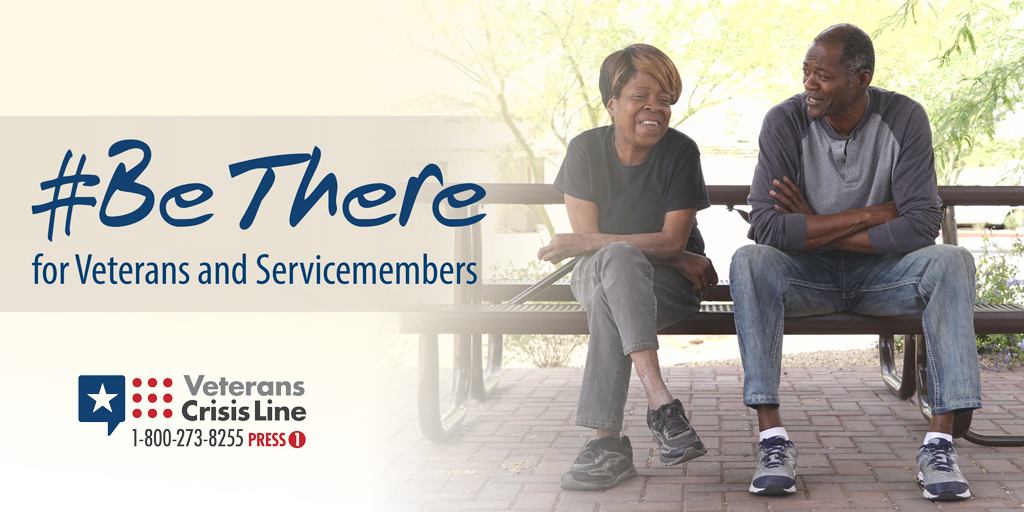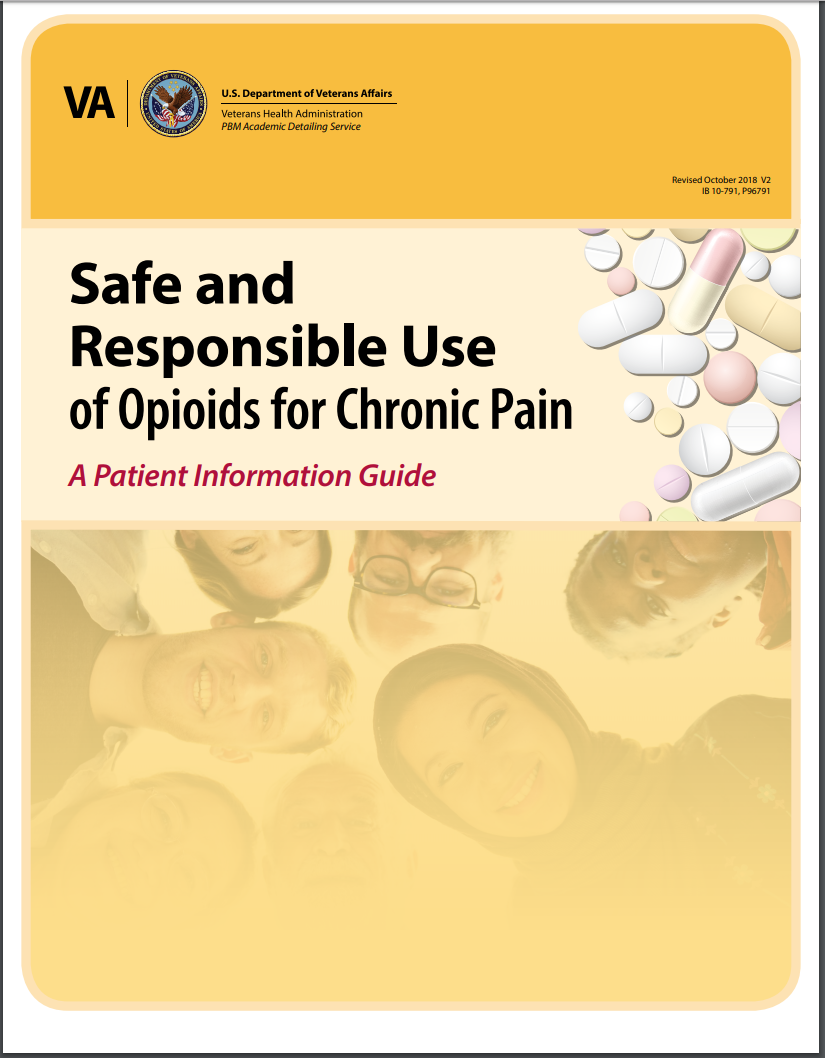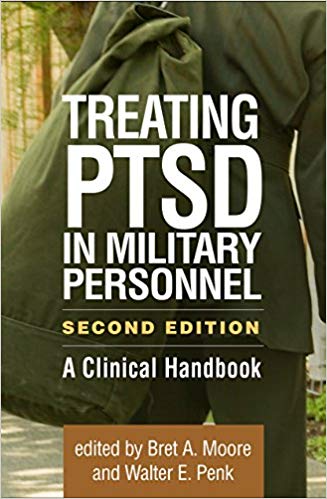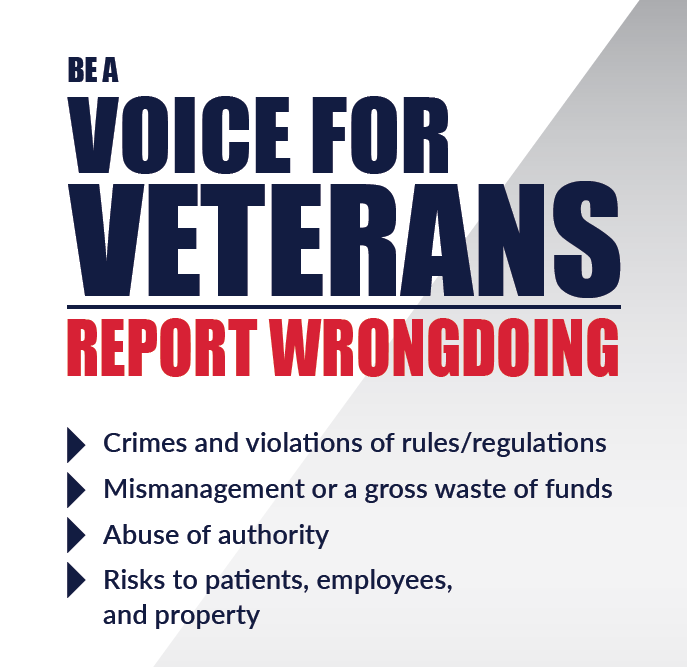- Home
- Psychologist & Psychiatrist C&P Examiners
- Disability Exams Research
- PTSD Clinical Research
PTSD Clinical Research
This page features a curated list of recent PTSD clinical research articles published in peer-reviewed medical and psychological journals, with an emphasis on PTSD treatment for military veterans and their families.
PTSDexams.net is an educational site with no advertising and no affiliate links. Dr. Worthen conducts Independent Psychological Exams (IPE) with veterans, but that information is on his professional practice website.
PTSD Clinical Research: Table of Contents
- Service Members Seeking Disability Compensation Did Not Progress in Intensive Outpatient Treatment for PTSD
- Treatment of Comorbid PTSD & Substance Use Disorders (SUD)
- Difficulty Regulating POSITIVE Emotions Associated with More Severe PTSD and Greater Substance Use
- Let's Ask PTSD Patients How to Improve PTSD Treatment
- PTSD Increases Odds of REM Sleep Behavior Disorder & Other Parasomnias
- Sleep Problems? Acupuncture Might Help
- Veterans Who Exaggerated Symptoms Nonetheless Benefited from PTSD Treatment
- Self-Reliance: Action Steps to Healing
- Concurrent Opioid & Benzodiazepine Prescriptions - Increased Mortality among Veterans with PTSD
- Predictors of Post-Discharge Suicide Attempt Among Veterans After Intensive PTSD Treatment
- PTSD and Problem Alcohol Use
- Treating PTSD in Military Personnel
Service Members Seeking Disability Compensation Did Not Progress in Intensive Outpatient Treatment for PTSD
Service Members Who Were Not Seeking Disability Benefits Showed Symptom Reduction During PTSD Treatment
Citation
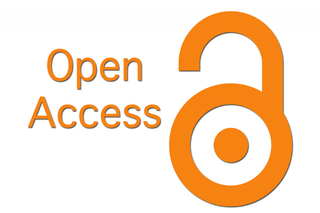
Hoyt, Tim, and Brianna E Staley Shumaker. “Disability Status Attenuates Treatment Effects in an Intensive Outpatient Program for PTSD.” Supplement, Military Medicine 186, no. S1 (Jan 2021): 190–97.
Abstract
Introduction: The utilization of intensive outpatient programs for the treatment of military-related post-traumatic stress disorder (PTSD) has increased through initiatives both inside and outside the military health care system.
However, research in veteran populations suggest that patients concurrently undergoing disability evaluation may not respond well to such interventions.
This study evaluates the relationship between disability separation and endorsement of PTSD symptoms during treatment at an intensive outpatient program.
Methods: Patients in this retrospective study were 81 service members enrolled in a half-day, 6-week intensive outpatient program for PTSD.
Sixty-seven percent (n = 54) were concurrently enrolled in the integrated disability evaluation system and were pending medical separation.
Fifty-two percent (n = 42) also received a 4-week skills training intervention before beginning PTSD treatment. Patients completed the PTSD Checklist before, during, and after the treatment program as an index of PTSD symptoms.
Results: A significant interaction effect was observed in which PTSD symptoms throughout program enrollment differed as a function of enrollment in the integrated disability evaluation system.
Patients undergoing disability evaluations did not show significant changes in endorsed PTSD symptoms during program enrollment, whereas significant decreases in PTSD symptoms were observed in patients not undergoing disability evaluations. These effects controlled for lost treatment days as a result of training or other appointments.
Conclusions: These results provide preliminary data indicating that participation in disability separation may attenuate the effect of PTSD treatment and endorsement of PTSD symptoms in an intensive outpatient setting.
Treatment of Comorbid PTSD & Substance Use Disorders (SUD)
Citation

Norman, Sonya B., and Denise A. Hien. "Behavioral Interventions for Comorbid PTSD and Substance Use Disorder." PTSD Research Quarterly 31, no. 2 (May 2020).
Subscribe to PTSD Research Quarterly (free)
PTSD Research Quarterly publishes erudite, pithy PTSD clinical research summaries, written by National Center for PTSD staff and other experts. I highly recommend subscribing to this excellent publication. (Scroll down the page to enter your email address.)
Key Points
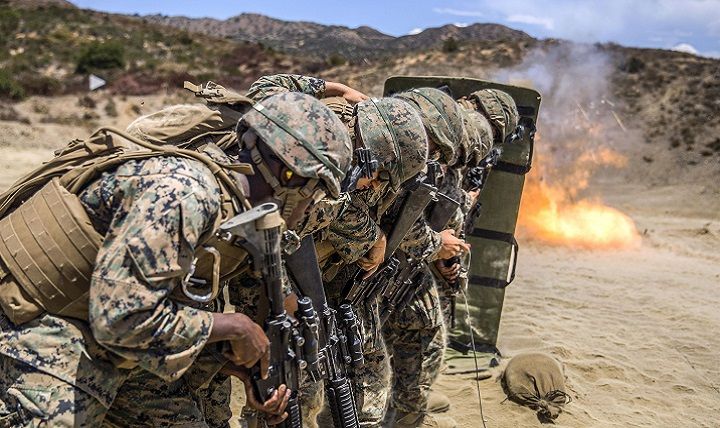
- The majority of veterans with PTSD also suffer from a comorbid substance use disorder (SUD)—74% of Vietnam vets and 63% of OEF/OIF veterans in two separate studies.
- Veterans do not need to complete substance abuse treatment before initiating PTSD treatment. Patients also do not need to have achieved complete abstinence from alcohol and other drugs before beginning prolonged exposure (PE) therapy for PTSD.
- In fact, concurrent or integrated PTSD + SUD treatment is more effective than sequential treatment.
- An integrated treatment strategy called Concurrent Treatment of PTSD and Substance Use Disorder Using Prolonged Exposure (COPE) has shown superior results in terms of PTSD symptom reduction and functional improvement, with either equivalent or superior results for reducing substance use.
- Preliminary evidence suggests that "massed treatment"—multiple treatment sessions every week—in either an IOP (intensive outpatient treatment) or residential treatment setting might be the most effective treatment model for comorbid PTSD + substance use disorder(s).
- Recent PTSD clinical research suggests that concurrent or integrated treatment utilizing Cognitive Processing Therapy (CPT) or Eye Movement Desensitization and Reprocessing (EMDR) therapy also shows preliminary positive results, when combined with an evidence-based SUD treatment protocol.
Difficulty Regulating POSITIVE Emotions Associated with More Severe PTSD and Greater Substance Use
Highlights
This recent PTSD clinical research showed that:
- Higher PTSD severity was related to greater substance use.
- Higher PTSD severity was related to more difficulties regulating positive emotions.
- More difficulties regulating positive emotions were related to greater substance use.
- Difficulties regulating positive emotions mediated the PTSD-substance use link.
- Difficulties regulating positive emotions may be an important treatment target.
Citation
Weiss, Nicole H., Melissa R. Schick, Ateka A. Contractor, and Katherine L. Dixon-Gordon. “Posttraumatic Stress Disorder and Substance Use: Identifying the Underlying Role of Difficulties Regulating Positive Emotions.” Addictive Behaviors, 96 (2019): 119–126. https://doi.org/10.1016/j.addbeh.2019.04.029
Abstract
The co-occurrence of posttraumatic stress disorder (PTSD) and substance use is clinically relevant.
Emotion dysregulation is one factor that has been shown to underlie this association. However, literature in this area has been limited in its exclusive focus on emotion dysregulation stemming from negative emotions.
The goal of the current study was to extend prior research by exploring the role of difficulties regulating positive emotions in the associations between PTSD symptom severity and both alcohol use and problems from drug use.
Participants were 463 trauma-exposed individuals recruited from Amazon's MTurk (M age=35.66 years; 55.7% female; 76.6% White).
PTSD symptom severity, difficulties regulating positive emotions, alcohol use, and problems from drug use demonstrated significant positive zero-order correlations.
Further, difficulties regulating positive emotions were found to account for the associations between PTSD symptom severity and both alcohol use and problems from drug use.
Our results suggest the potential utility of addressing difficulties regulating positive emotions in interventions aimed at reducing substance use and abuse among individuals with PTSD.
Let's Ask PTSD Patients How to Improve PTSD Treatment
That almost sounds like a radical idea, doesn't it.
I mean, we are the doctors and they are the patients. What do they know?
Actually, patients know a lot.
And in truth, asking patients for ideas to improve treatment is not a new idea.
It's a proven continuous improvement strategy
- at the individual clinician level,
- for departments or clinics, and
- for large healthcare organizations such as the Veterans Health Administration.
Citation
Ferrell, Emily L., Sarah E. Russin, and Jennifer T. Grant. “On Being a Client with Posttraumatic Stress Disorder: Interactions with Treatment Providers and Institutional Barriers.” Journal of Community Psychology, epub ahead of print (8 April 2020). https://doi.org/10.1002/jcop.22359
Abstract
Premature dropout from psychological treatment for posttraumatic stress disorder (PTSD) is common.
Little research has sought to understand perceptions of treatment and barriers to treatment in this population.
This study analyzed anonymous posts among an online community of individuals with PTSD (93 forum users comprising 158 posts regarding treatment providers and 40 forum users comprising 50 posts regarding institutional barriers).
Results indicated that individuals with PTSD desire:
- greater clarity about expectations for treatment,
- collaboration toward treatment goals,
- open discussion of client‐therapist boundaries, and
- increased validation among therapists in response to trauma disclosure.
Individuals with PTSD also reported multiple systemic issues that were barriers to treatment including:
- a lack of available services in their area,
- being placed on a waitlist for long periods of time,
- the cost of treatment as a financial burden, and
- poor crisis response in emergency rooms.
Findings indicated areas of growth for treatment providers which will help inform future treatment studies in improving care and treatment adherence among individuals with PTSD.
Key Points
This PTSD clinical research highlights several important principles.
* Although asking patients for suggestions to improve treatment is not a new idea, it seems that we often forget to ask.
* Organizations improve patient care when they frequently solicit ideas, suggestions, and feedback from patients.
* This research stands out in part for its ingenious methodology—gathering data from anonymous online discussions.
PTSD Increases Odds of REM Sleep Behavior Disorder & Other Parasomnias
Citation
Elliott, Jonathan E., Ryan A. Opel, Dennis Pleshakov, Tara Rachakonda, Alexander Q. Chau, Kristianna B. Weymann, and Miranda M. Lim. "Posttraumatic Stress Disorder Increases the Odds of REM Sleep Behavior Disorder and Other Parasomnias in Veterans with and without Comorbid Traumatic Brain Injury." Sleep 43, no. 3 (Mar 2020): zsz237. https://doi.org/10.1093/sleep/zsz237
Abstract
Study Objectives: To describe the crude prevalence of rapid eye movement (REM) sleep behavior disorder (RBD) following traumatic brain injury (TBI) and posttraumatic stress disorder (PTSD) in Veterans, given potential relationships between TBI, PTSD, RBD, and neurodegeneration.
Methods: Veterans (n = 394; 94% male; 54.4 ± 15.5 years of age) were prospectively/cross-sectionally recruited from the VA Portland Health Care System and completed in-lab video-polysomnography and questionnaires.
TBI and PTSD were assessed via diagnostic screening and medical record review. Subjects were categorized into four groups after assessment of REM sleep without atonia (RSWA) and self-reported dream enactment:
(1) “Normal,” neither RSWA nor dream enactment,
(2) “Other Parasomnia,” dream enactment without RSWA,
(3) “RSWA,” isolated-RSWA without dream enactment, and
(4) “RBD,” RSWA with dream enactment.
Crude prevalence, prevalence odds ratio, and prevalence rate for parasomnias across subjects with TBI and/or PTSD were assessed.
Results: Overall prevalence rates were:
Other Parasomnia: 31%
RSWA (REM sleep without atonia): 7%
RBD (rapid eye movement sleep behavior disorder): 9%
The prevalence rate of RBD increased to 15% in PTSD subjects [age adjusted POR (prevalence odds ratio): 2.81 (1.17–4.66)] and to 21% in TBI + PTSD subjects [age adjusted POR: 3.43 (1.20–9.35)].
No subjects met all diagnostic criteria for trauma-associated sleep disorder (TASD), and no overt dream enactment was captured on video.
Conclusions: The prevalence of RBD and related parasomnias is significantly higher in Veterans compared with the general population and is associated with PTSD and TBI + PTSD.
Considering the association between idiopathic-RBD and synucleinopathy, it remains unclear whether RBD (and potentially TASD) associated with PTSD or TBI + PTSD similarly increases risk for long-term neurologic sequelae.
Statement of Significance: Idiopathic REM sleep behavior disorder (RBD) and neuropsychiatric trauma (e.g. traumatic brain injury; TBI and/or post-traumatic stress disorder; PTSD) are both independently associated with subsequent neurodegeneration (e.g. Parkinson’s Disease or a related synucleinopathy).
Given the purported relationships between TBI, PTSD, RBD, and neurodegeneration, we sought to determine the crude prevalence and related associations of RBD following TBI and PTSD among Veterans.
Our data show that the prevalence of RBD and related parasomnias is significantly higher in Veterans with PTSD and TBI + PTSD compared with Veterans without a history of neuropsychiatric trauma.
Accordingly, the present study fills a critical gap in the literature by providing evidence associating neuropsychiatric trauma with RBD and related parasomnias.
Terminology
This excellent PTSD clinical research uses some terms that might not be familiar to some readers—I know I had to look up a couple!
Atonia - lack of normal muscle tone; muscular weakness.
Rapid eye movement (REM) sleep behavior disorder - a sleep disorder in which you physically act out vivid, often unpleasant dreams with vocal sounds and sudden, often violent arm and leg movements during REM sleep — sometimes called dream-enacting behavior.
- You normally don't move during REM sleep, a normal stage of sleep that occurs many times during the night. About 20 percent of your sleep is spent in REM sleep, the usual time for dreaming, which occurs primarily during the second half of the night.
- With REM sleep behavior disorder, instead of experiencing the normal temporary paralysis of your arms and legs (atonia) during REM sleep, you physically act out your dreams.
- The onset can be gradual or sudden, and episodes may occur occasionally or several times a night. The disorder often worsens with time.
- Symptoms may include: Movement, such as kicking, punching, arm flailing or jumping from bed, in response to action-filled or violent dreams, such as being chased or defending yourself from an attack; or noises, such as talking, laughing, shouting, emotional outcries or even cursing. SOURCE: Mayo Clinic, REM sleep behavior disorder.
Synucleinopathy - also called α-synucleinopathies, are neurodegenerative diseases characterised by the abnormal accumulation of alpha-synuclein protein in neurons, nerve fibres, or glial cells. There are three main types of synucleinopathy: Parkinson's disease (PD), dementia with Lewy bodies (DLB), and multiple system atrophy (MSA). SOURCE: Wikipedia, Synucleinopathy.
Trauma associated sleep disorder (TASD) - A proposed new sleep disorder diagnosis characterized by nightmares and disruptive nocturnal behaviors that develop after traumatic experiences. See these articles by COL Vincent Mysliwiec MD (USA Ret.) & colleagues:
- Mysliwiec, Vincent , Brian O'Reilly, Jason Polchinski, Herbert P. Kwon, Anne Germain, and Bernard J. Roth. "Trauma Associated Sleep Disorder: A Proposed Parasomnia Encompassing Disruptive Nocturnal Behaviors, Nightmares, and REM without Atonia in Trauma Survivors." Journal of Clinical Sleep Medicine 10, no. 10 (2014): 1143–1148.
- Mysliwiec, Vincent, Matthew S. Brock, Jennifer L. Creamer, Brian M. O'Reilly, Anne Germain, and Bernard J. Roth. "Trauma Associated Sleep Disorder: a Parasomnia Induced by Trauma." Sleep Medicine Reviews 37 (Feb 2018): 94-104.
- Mysliwiec, Vincent, and Matthew S. Brock. "Time to Recognize Trauma Associated Sleep Disorder as a Distinct Parasomnia." Sleep 43, no. 3 (Mar 2020): zsaa019.
Sleep Problems? Acupuncture Might Help
Citation
Huang, Wei, Theodore M. Johnson, Nancy G. Kutner, Sean N. Halpin, Paul Weiss, Patricia C. Griffiths, and Donald L. Bliwise. "Acupuncture for Treatment of Persistent Disturbed Sleep: A Randomized Clinical Trial in Veterans With Mild Traumatic Brain Injury and Posttraumatic Stress Disorder." Journal of Clinical Psychiatry 80, no. 1 (2019): 18m12235. https://doi.org/10.4088/JCP.18m12235
Key Point for Veterans
- If you don't want to take medication for sleep, or if meds haven't worked, ask your doctor about acupuncture.
- This PTSD clinical research suggests that acupuncture might work well for some patients, but please do discuss it with your psychiatrist or primary care doctor first, in part because if acupuncture is indicated, you will want a referral to a highly skilled acupuncture specialist with the right education, training, and experience.
Key Point for Psychologists & Psychiatrists
- Learn about qualified acupuncturists at your medical center or in your community and consider a referral for acupuncture to treat persistent sleep problems.
- Of course, for psychologists like yours truly (Dr. Worthen), this is a referral to make only after consultation with a patient's psychiatrist or primary care physician as there may be medical contraindications or other considerations.
Article Abstract
Objective: To evaluate real, as compared with sham, acupuncture in improving persistent sleep disturbance in veterans with mild traumatic brain injury (mTBI) and posttraumatic stress disorder (PTSD).
Methods: This sham-controlled randomized clinical trial at a US Department of Veterans Affairs Medical Center (2010–2015) included 60 veterans aged 24–55 years (mean of 40 years) with history of mTBI of at least 3 months and refractory sleep disturbance.
Most of these participants (66.7%) carried a concurrent DSM-IV clinical diagnosis of PTSD. For the present study, they were randomized into 2 groups and stratified by PTSD status using the PTSD Checklist–Military Version. Each participant received up to 10 treatment sessions.
The primary outcome measure was change in baseline-adjusted global Pittsburgh Sleep Quality Index (PSQI) score following intervention. Secondary outcomes were wrist-actigraphy–assessed objective sleep measurements. Comorbid PTSD was analyzed as a covariate.
Results: Mean (SD) pre-intervention global PSQI score was 14.3 (3.2) [mean = 14.3; standard deviation = 3.2].
Those receiving real acupuncture had a global PSQI score improvement of 4.4 points (relative to 2.4 points in sham, p = .04) and actigraphically measured sleep efficiency (absolute) improvement of 2.7% (relative to a decrement of 5.3% in sham, p = .0016).
Effective blinding for active treatment was maintained in the study. PTSD participants presented with more clinically significant sleep difficulties at baseline; acupuncture was effective for both those with and without PTSD.
Conclusions: Real acupuncture, compared with a sham needling procedure, resulted in a significant improvement in sleep measures for veterans with mTBI and disturbed sleep, even in the presence of PTSD.
These results indicate that an alternative-medicine treatment modality like acupuncture can provide clinically significant relief for a particularly recalcitrant problem affecting large segments of the veteran population.
Trial Registration: ClinicalTrials.gov identifier: NCT01162317
Veterans Who Exaggerated Symptoms Nonetheless Benefited from PTSD Treatment
Citation

Williams, M Wright, David Graham, Nicole A Sciarrino, Matt Estey, Katherine L McCurry, Pearl Chiu, and Brooks King-Casas. “Does Validity Measure Response Affect CPT Group Outcomes in Veterans with PTSD?” Military Medicine 185, no. 3-4 (2020): e370–e376.
https://doi.org/10.1093/milmed/usz385
Key Points for Veterans
If a C&P examiner indicates that you exaggerated symptoms (or exhibited "suboptimal effort") during your compensation and pension exam, consider:
(1) The psychologist might have misinterpreted test results or jumped to conclusions;
(2) You might have exaggerated symptoms without a clear, conscious plan to do so—people frequently exaggerate, often subconsciously, for various understandable reasons.
(2a) If #2 might apply to you, and VBA denied your claim, don't despair!
Appeal VBA's decision—talk with your veterans service officer about the options, and seriously consider retaining a veterans law attorney.
(2b) Remember that this PTSD clinical research suggests you can be just as successful in PTSD treatment as any other veteran with PTSD.
A report of exaggeration could prejudice some people—in other words, they might think you are not serious about getting better. Don't overreact to such people, but also don't let them tell you treatment won't work for you.
(3) If you consciously planned and intended to exaggerate PTSD symptoms, then it's important to ask yourself why you did that. People intentionally exaggerate psych problems for many reasons other than "malingering".
Key Points for Psychologists & Psychiatrists
We all have cognitive biases.
If you think you don't, you probably have more implicit biases lurking in your brain than your colleagues.
After you've seen a number of veterans entering PTSD treatment to (seemingly) "get their PTSD diagnosis" for a disability claim, it's easy to develop a belief like, "a lot of these vets don't really want to get better".
Of course, your belief might be true for some vets, but can you discern with great accuracy who is genuinely motivated for treatment and who isn't? I know I can't, and I seriously doubt the vast majority of mental health clinicians can make such predictions accurately.
Therefore if you find yourself thinking, "psych testing showed he was exaggerating, therefore he's not motivated for PTSD treatment", catch yourself!
Remember this PTSD clinical research and challenge that cognitive bias before it impairs your professional judgement.
Article Abstract
Introduction: There is a dearth of research on the impact of pre-treatment assessment effort and symptom exaggeration on the treatment outcomes of Veterans engaging in trauma-focused therapy, handicapping therapists providing these treatments.
Research suggests a multi-method approach for assessing symptom exaggeration in Veterans with posttraumatic stress disorder (PTSD), which includes effort and symptom validity tests, is preferable.
Symptom exaggeration has also been considered a “cry for help,” associated with increased PTSD and depressive symptoms. Recently, research has identified resilience as a moderator of PTSD and depressive symptom severity and an important predictor of treatment response among individuals with PTSD.
Thus, it is important to examine the intersection of symptom exaggeration, resilience, and treatment outcome to determine whether assessment effort and symptom exaggeration compromise treatment response.
Materials and Methods: We recruited Veterans, aged 18–50 who served during the Operation Enduring Freedom/Operation Iraqi Freedom/Operation New Dawn (OEF/OIF/OND) era, from mental health clinics and fliers posted in a large Veterans Affairs Medical Center.
Veterans met inclusion criteria if they were diagnosed with PTSD via a clinician-administered assessment. Sixty-one Veterans consented to participate and self-selected into a cognitive processing therapy (CPT) group or treatment-as-usual.
We offered self-selection because low recruitment rates delayed treatment start dates and were consistent with a Veteran-centered care philosophy.
Veterans were assessed before and after treatment to determine the impact of assessment effort and symptom exaggeration scores on measures of PTSD and depressive symptoms and resilience. This study examined whether assessment effort failure and symptom exaggeration were associated with compromised psychotherapy outcomes in Veterans with PTSD undergoing CPT group.
We hypothesized that a pattern of responding consistent with both effort and symptom exaggeration would result in higher (ie, more severe) pre- and post-treatment scores on PTSD and depressive symptom outcome measures and lower resiliency when compared to Veterans providing good effort and genuine responding.
Hypotheses were evaluated using bivariate correlation analyses, analysis of variance, and chi-square analyses.
Results: Pre-treatment scores on measures of PTSD and depressive symptoms were higher among Veterans whose pattern of responding was consistent with poor assessment effort and symptom exaggeration; these Veterans also scored lower on a measure of resiliency.
At post-treatment, there were no differences between Veterans displaying good and failed effort testing on measures of PTSD and depressive symptoms or in whether they completed treatment. Post-treatment resiliency scores remained significantly lower in those with failed effort testing.
Conclusion: These results suggest that Veterans with PTSD whose validity testing scores are indicative of poor effort and symptom exaggeration may be less resilient but may still complete a CPT group treatment and benefit from treatment at a rate comparable to Veterans who evidence good assessment effort and genuine symptom reporting pre-treatment.
These findings also challenge the assumption that pre-treatment assessment effort failure and symptom exaggeration accurately predict poor effort in trauma-focused psychotherapy.
Self-Reliance: Action Steps to Healing
Key Points: 4 Action Steps
- Improve Sleep Quality
- Abstain or Moderate Alcohol Use
- Strengthen Social Support
- Cultivate Optimism
Citation
McCaslin, Shannon E., Marylene Cloitre, Thomas C. Neylan, Donn W. Garvert, Ellen Herbst, and Charles Marmar. "Factors Associated with High Functioning Despite Distress in Post-9/11 Veterans". Rehabilitation Psychology, epub ahead of print. http://doi.org/10.1037/rep0000271
Abstract
Objective: This study aimed to identify modifiable factors associated with perceived functioning among veterans with high symptoms of posttraumatic stress disorder (PTSD).
Method: Two hundred fifty-one post-9/11 veterans completed a survey of psychosocial symptoms and functioning; a subset participated in a follow-up survey (n = 109). Latent profile analysis (LPA) at baseline identified groups that differed by level of functioning (high/low). Items utilized in the LPA analysis were derived from the World Health Organization Quality of Life—Brief self-report measure. Veterans with high PTSD symptoms in both groups were compared and logistic regression was utilized to predict group membership.
Results: Veterans with high functioning/high symptoms (n = 45) had significantly lower alcohol use and sleep problems, and higher postdeployment social support, posttraumatic growth, and optimism than veterans with low functioning/high symptoms (n = 100).
Fewer sleep difficulties and higher postdeployment social support and optimism were associated with membership in the high functioning/high symptom group.
Conclusions: These findings support the importance of identifying factors that can facilitate higher social, occupational, and general functional capacity for those with high levels of PTSD symptomatology.
Comment
This PTSD clinical research offers important insights and specific action steps veterans with PTSD can take to help themselves.
(1) Strengthen your social support network. Taking this step requires vulnerability, which is frightening. However, taking the risk of talking about emotional pain with family and friends yields countless benefits, including less severe PTSD symptoms, as this article describes.
But don't worry too much about having to be emotionally vulnerable. While that anxiety-producing act will help tremendously, it isn't the only type of social support that helps.
Simply taking the time (and the making the commitment) to spend time with friends and family doing almost anything (drinking or getting high frequently is one of the exceptions) also "counts" as social support, which will significantly boost mood, outlook, and functioning.
(2) Choose either total abstinence or moderate use of alcohol.
Excessive alcohol use will almost always make PTSD symptoms worse.
Excessive alcohol use means binge drinking (4 or more standard drinks for women—5 or more standard drinks for men—within about 2 hours), or heavy drinking (8 or more standard drinks a week for women; 15 or more standard drinks a week for men).
What is a "Standard Drink"?
A standard drink contains 0.6 ounces (17.7 mL) of ethanol (ethyl alcohol, the type of alcohol found in beer, wine, and liquor).
12 ounce beer (5% alcohol) = 12 x 0.05 = 0.6 ounces alcohol
5 ounces table wine (12% alcohol) = 5 x 0.12 = 0.6 ounces alcohol
1.5 ounces liquor, such as vodka, gin, whiskey, or tequila (80 proof = 40% alcohol) = 1.5 x 0.40 = 0.6 ounces alcohol.
(3) If you are having trouble sleeping, improve your sleep by taking action:
(a) Talk with your doctor. Tell your primary care physician, psychiatrist, or psychologist about your sleep difficulties. He or she will discuss various treatment options with you such as good sleep hygiene, cognitive-behavioral treatment (CBT) for insomnia, medication, acupuncture, and other interventions.
Concurrent Opioid & Benzodiazepine Prescriptions: Increased Mortality among Veterans with PTSD
Citation
Hawkins, Eric J., Simon B. Goldberg, Carol A. Malte, and Andrew J. Saxon. "New Coprescription of Opioids and Benzodiazepines and Mortality Among Veterans Affairs Patients With Posttraumatic Stress Disorder". Journal of Clinical Psychiatry 80, no. 4 (2019): 18m12689. https://doi.org/10.4088/JCP.18m12689
Corresponding Author
ERIC J HAWKINS PHD
VA PUGET SOUND HCS (S116ATC)
1660 S COLUMBIAN WAY
SEATTLE WA 98108-1532
Eric.Hawkins@va.gov
Abstract
Background: Opioids and benzodiazepines are commonly coprescribed medications. The mortality risk associated with their concurrent use is unknown.
Objective: To estimate the all-cause mortality risk for patients newly prescribed opioids and benzodiazepines concurrently relative to patients prescribed benzodiazepines only, opioids only, or neither medication.
Methods: This propensity score–matched, retrospective, cohort study included 17,476 patients receiving Veterans Affairs (VA) health care between October 1, 2009, and September 30, 2011, and diagnosed with posttraumatic stress disorder identified using ICD-9-CM code 309.81.
One-year total and cause-specific mortality was assessed by hazard ratios and subhazard ratios, adjusted for propensity score, age, baseline psychiatric and medical comorbidity, and daily medication dose.
Results: Concurrent users (n = 4,369) were propensity score matched 1:1 with benzodiazepine-only users, opioid-only users, and nonusers.
One year after medication start, the concurrent cohort had higher rates of all-cause mortality (116 deaths) relative to benzodiazepine-only (75 deaths; adjusted hazard ratio = 1.52; 95% CI, 1.14–2.03), opioid-only (67 deaths; 1.76; 95% CI, 1.32–2.35), and nonuser (60 deaths; 1.85; 95% CI, 1.30–2.64) cohorts.
Risk of overdose death was greater among patients in the concurrent cohort relative to patients in the benzodiazepine-only (adjusted subhazard ratio = 2.59; 95% CI, 1.00–6.66), opioid-only (2.58; 95% CI, 1.09–6.11), and nonuser (9.16; 95% CI, 2.27–37.02) cohorts.
For circulatory disease–related deaths, the adjusted subhazard ratio for concurrent medication users was 1.81 (95% CI, 1.01–3.24) relative to nonusers.
Conclusions: New coprescription of opioids and benzodiazepines was associated with increased all-cause mortality and overdose death compared with new prescription of benzodiazepines only, opioids only, or neither medication and increased circulatory disease–related death relative to neither medication.
Comment
* The VA fully funded this important research, and all the researchers are VA employees, which demonstrates VA's willingness to examine itself via empirical investigations—a sign of integrity in my book.
* The researchers analyzed data from 2009–2011. Since that time, the nation and VA have recognized the dangers of long-term opioid prescriptions, and the increased dangers of combining opioid medication with a benzodiazepine such as Xanax (alprazolam), Klonopin (clonazepam), or Ativan (lorazepam).
The VA has taken steps to reduce opioid prescriptions1,2 and has embraced the multi-disciplinary, multi-modal treatment of chronic pain.3
Some problems persist, as evidenced by a May 2018 Government Accountability Office report, Progress Made Towards Improving Opioid Safety, but Further Efforts to Assess Progress and Reduce Risk Are Needed, but patient safety has improved significantly over the last 10 years.
---
Footnotes
1. Lin, Lewei A., Amy SB Bohnert, Robert D. Kerns, Michael A. Clay, Dara Ganoczy, and Mark A. Ilgen. "Impact of the Opioid Safety Initiative on Opioid-related Prescribing in Veterans." Pain 158, no. 5 (2017): 833-839.
2. Pharmacy Benefits Management (PBM) Academic Detailing Service, Veterans Health Administration, "Safe and Responsible Use of Opioids for Chronic Pain: A Patient Information Guide", ver. 2 (rev. October 2018).
3. Meyer, Laurence and Friedhelm Sandbrink, "VHA Response to the Opioid Epidemic and Comprehensive Addiction and Recovery Act of 2016 (CARA)", National Academies of Sciences, Engineering, and Medicine (NASEM) presentation (10 Jan 2019).
Predictors of Post-Discharge Suicide Attempt Among Veterans After Intensive PTSD Treatment
Citation
Stefanovics, Elina A. and Robert A. Rosenheck. "Predictors of Post-discharge Suicide Attempt Among Veterans Receiving Specialized Intensive Treatment for Posttraumatic Stress Disorder". Journal of Clinical Psychiatry 80, no. 5 (2019):19m12745.
Abstract
Objective: There has been increasing concern about the high risk of suicide among US veterans, especially those with posttraumatic stress disorder (PTSD). Among those at greatest risk are veterans recently discharged from inpatient or specialized intensive treatment programs, but little is known about clinical correlates of suicide attempts among such veterans and this information that might facilitate prevention efforts.
Methods: National program evaluation data were obtained at program entry and 4 months after discharge from 30,384 veterans from 57 sites (fiscal years 1993–2011) who were discharged from specialized intensive PTSD programs nationally in the Veterans Health Administration.
Rates of attempted suicide were 10.6% in the 4 months prior to admission and 3.4% in the 4 months following discharge. Bivariate analyses and multivariable logistic regression were used to identify baseline characteristics, especially PTSD symptoms, associated with suicide attempts prior to admission and after discharge.
Further analyses examined the association of changes in symptoms and other outcomes with reported post-discharge suicide attempts.
Results: Suicide attempts both prior to admission and after discharge were associated with psychiatric and substance abuse comorbidity and especially suicidal ideation and violent behavior.
Clinical changes independently associated with post-discharge suicide attempts included increased suicidal thoughts (β = 0.96, P < .001), violent behavior (β = 0.49, P < .001), and alcohol use (β = 0.56, P < .001).
Conclusions: In this longitudinal study, violent behavior assessed at admission and as a change measure after discharge, along with suicidal ideation and alcohol use, were associated with suicide attempts.
Additional therapeutic attention to violent behavior and alcohol use, quite likely reflecting underlying impulsivity, may help reduce the risk of suicide attempts.
Author Information
Both authors are affiliated with:
- Department of Veteran Affairs, New England Mental Illness Research Education and Clinical Center (MIRECC), West Haven, Connecticut.
- Department of Psychiatry, Yale University School of Medicine, New Haven, Connecticut.
* The corresponding author for this PTSD clinical research is:
Elina A. Stefanovics, PhD, Yale University School of Medicine, VA Connecticut Healthcare System/116A, 950 Campbell Ave, West Haven, CT 06516 (elina.stefanovics@yale.edu).
PTSD and Problem Alcohol Use
Citation
Berke, Danielle S., Julie Yeterian, Candice Presseau, Luke Rusowicz-Orazem, Nora K. Kline, William P. Nash, and Brett T. Litz. Dynamic Changes in Marines’ Reports of PTSD Symptoms and Problem Alcohol Use Across the Deployment Cycle. Psychology of Addictive Behaviors 33, no. 2 (2019): 162-170. https://doi.org/10.1037/adb0000430
Abstract
Posttraumatic stress disorder (PTSD) and alcohol misuse are commonly co-occurring problems in active-duty service members (SMs) and veterans.
Unfortunately, relatively little is known about the temporal associations between these problems in the acute period following exposure to combat stressors.
Discerning the temporal associations between these problems across the deployment cycle could inform prevention and treatment efforts.
In this study, we examined the association between PTSD symptom severity and problem alcohol use in a large cohort of United States Marines (n = 758) evaluated prior to deployment and approximately 1, 5, and 8 months postdeployment.
Results indicate that problem alcohol use was associated with a subsequent exacerbation of PTSD symptoms between the 1st and 2nd and 2nd and 3rd postdeployment assessments.
PTSD symptom severity was associated with increased problem alcohol use between the 1st and 2nd postdeployment assessments.
These findings suggest that problem drinking may lead to new onset or worsening of PTSD symptoms over time and that SMs [Service Members] with greater PTSD symptom severity upon returning from deployment may increase alcohol use in the weeks immediately following homecoming.
Comment
The relationship between PTSD and substance use disorders is an important factor in PTSD C&P exams. If a veteran's posttraumatic stress disorder is service-connected, and if the veteran also suffers from a substance use disorder, the VA mental health examiner must determine if the substance use disorder is "proximately due to or the result of" PTSD or if PTSD has aggravated a pre-existing substance use disorder.1
This PTSD clinical research suggests, at least with this cohort of U.S. Marines, that the causal relationship goes both ways.
Footnote
1. Disabilities that are proximately due to, or aggravated by, service-connected disease or injury, 38 C.F.R. § 3.310.
Treating PTSD in Military Personnel
Moore, Bret A. and Walter E. Penk, eds. Treating PTSD in Military Personnel, Second Edition: A Clinical Handbook. New York: Guildford, 2019. [Publication date: 3 Apr 2019]
Pre-order from Guilford Press for $38.75 (List price: $45.00).
Description (from publisher):
This state-of-the-science guide to assessing and treating posttraumatic stress disorder (PTSD) in active-duty service members and veterans has now been extensively revised with 65% new material.
Leading authorities review available evidence-based treatments, including individual, group, and couple and family therapy approaches.
Knowledge about military culture, the stressors experienced by service members, and common challenges for both military and civilian practitioners is woven through the volume and reflected in the vivid case examples.
Chapters on specific clinical issues delve into co-occurring affective, anxiety, substance use, and sleep disorders; treatment of particular types of trauma; suicide prevention; and more.
New to This Edition
Chapters on additional treatments: mindfulness-based behavioral and cognitive therapies, stress inoculation training, cognitive-behavioral conjoint therapy, group therapy, and complementary and alternative therapies.
Chapters on additional clinical issues: chronic pain, moral injury, complex traumatic stress disorders, and posttraumatic growth.
Updated throughout with the latest treatment research and DSM-5 diagnostic changes.
Review by Dr. Brian Marx
“Moore and Penk have once again assembled a 'who’s who' of leading researchers to present the latest on evidence-based treatments for PTSD in military personnel. The second edition of this handbook is an absolute 'must read' for anyone who provides care to this population. The detailed insights into important considerations for working with military personnel, careful attention to clinical issues that frequently co-occur with PTSD, and clearly presented case examples that illustrate how to implement the various treatments successfully are what make this volume stand apart.”
—Brian P. Marx, PhD, National Center for PTSD, VA Boston Healthcare System; Department of Psychiatry, Boston University School of Medicine.
- Home ›
- Psych Examiners ›
- Clinical Research
Subscribe to receive new articles and other updates
What Do You Think?
I value your feedback!
If you would like to comment, ask questions, or offer suggestions about this page, please feel free to do so. Of course, keep it clean and courteous.
You can leave an anonymous comment if you wish—just type a pseudonym in the "Name" field.
If you want to receive an email when someone replies to your comment, click the Google Sign-in icon on the lower right of the comment box to use Google Sign-in. (Your email remains private.)
↓ Please comment below! ↓

